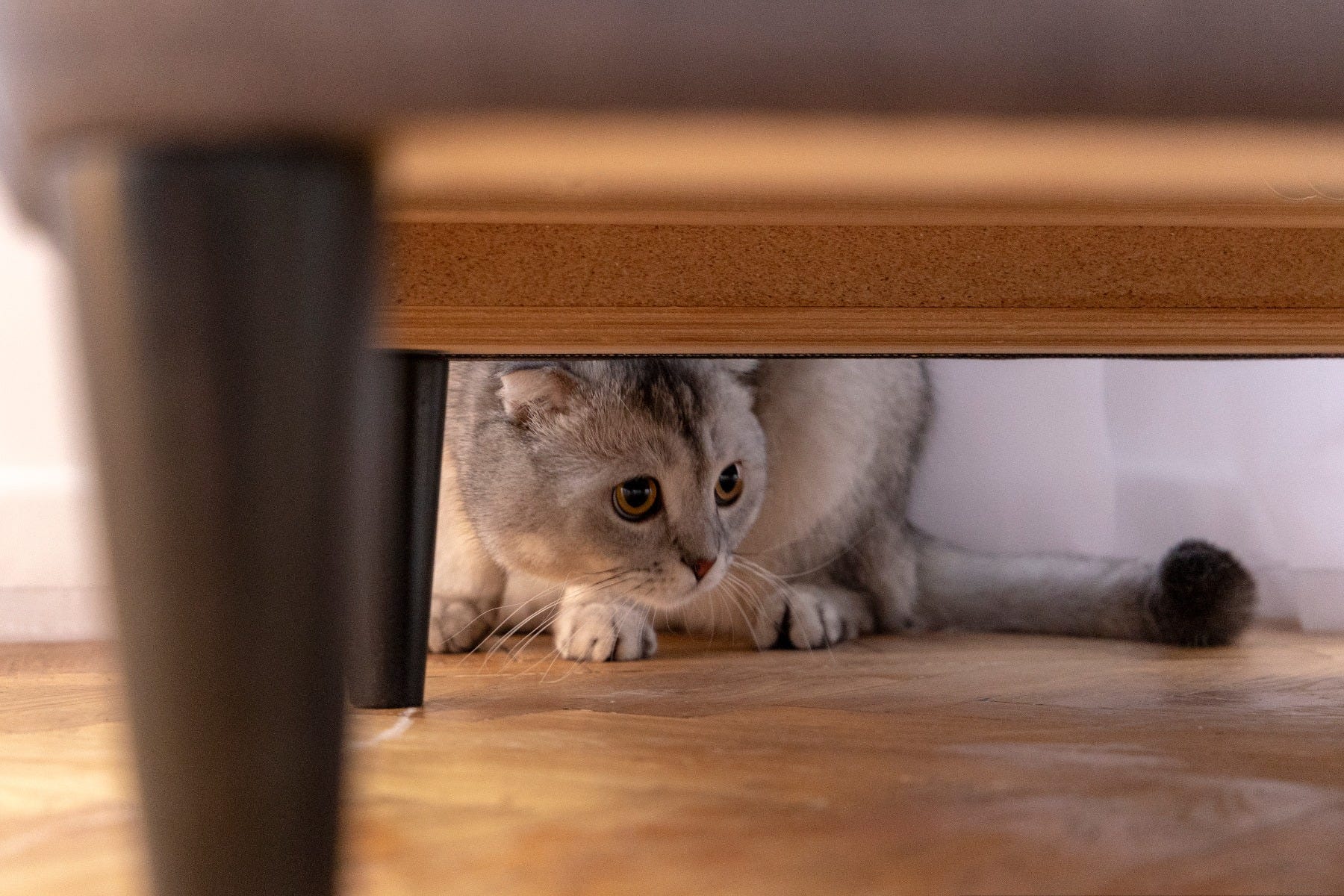Bringing Home a New Cat
Whether you’ve decided to rescue, have gone through a breeder, or have found yourself opening your home to a cat for any other reason, there are a lot of things you need to consider when welcoming a new cat into your home. In this article, we’ll take you through the key things you need to remember when the time comes to bring your new bundle of fluff into your family so they can settle in properly and feel at ease in their new home.
Contents:

Before You Bring Your Cat Home
The journey to helping your new cat settle in doesn’t start on the day of their arrival.
Firstly, it’s important to ensure that your home is prepared for a cat. Even if you’re planning to allow them outdoor access, any new cat will need to be kept indoors for a time so they properly settle in and familiarise themselves with their environment and recognise your home as their own.
As a general rule, you should always keep a new cat indoors for at least 2-3 weeks after bringing them home, and if they are struggling to settle, this stretches to up to 6 weeks.
Choose a spot in your home that doesn’t have a lot of traffic during the day so your cat can have a quiet space, such as a spare bedroom, to get comfortable in that has all the necessary amenities, including:
- Food and water bowls
- A comfy bed
- A litter tray
- Somewhere they can hide
- A scratching post
- Some toys
This space is going to be your cat’s safe haven when they first enter your home so they can get accustomed in their own time before being introduced to the rest of the home.
Travelling With Your Cat
The most important thing you need when travelling with any pet is a suitable pet carrier for them, and many rescues may not let you leave their set with your new cat if you haven’t got one.
When choosing a pet carrier, make sure that it’s large enough for your cat to be able to lie down and stand up, and has enough space for them to move and turn around so they don’t feel too trapped. It also needs to not be too big to ensure your cat doesn’t fall out, or get thrown around inside if you take a sharp turn or an unexpected brake while travelling.
Your cat carrier is going to be an essential item, even after you’ve brought your cat home as you’ll need it for vet visits and any other times your cat needs to be moved safely, so make sure you choose one that’s:
- Strong and sturdy
- Easy to clean
- Well ventilated
- Lightweight
Travelling can make a lot of cats feel anxious as they’re unfamiliar with being inside vehicles, and the sounds and motion can stress them out. To help with this, you can also use a quick and efficient pheromone spray like this Feliway Spray at least fifteen minutes before your cat is in the car to help them feel more safe and secure.
If your new cat is particularly nervous, or you're travelling a long distance, it may be worth speaking to your vet about using a cat anxiety treatment to help them with the journey.

When You Get Your Cat Home
Cats are, by nature, creatures of habit and don’t take too kindly to change, so it’s important that no matter what age your cat is, or their temperament, you allow them to adjust to things in their own time.
Once you’ve made it home, take your cat (still in the carrier) to the space you’ve set up for them beforehand. Then, open the carrier and allow your cat to come out in their own time to explore their new surroundings. How long your cat chooses to stay in the carrier will depend on their temperament, and some cats may prefer to stay inside for some time before gaining enough confidence to venture out and explore.
Try and leave your cat alone during this first initial stage so they can find their feet without too much interference. They’ll likely spend this time sniffing around and getting used to the new smells and sounds, and as long as they have fresh food, water, and a litter tray, they are perfectly alright to be left alone to do so. You can check on your cat while they’re in this separate room, don’t try to force them to interact or expect them to be overly playful or social, as these things tend to come with time.
If, after some time, your cat is showing signs of being curious about the rest of your home or in you, you can begin to gradually spend more time with them before letting them explore the rest of the home.

Ways To Help Your New Cat Settle In
It’s perfectly understandable for you to want to do whatever you can to help your new cat settle in as smoothly as possible, and luckily, we have some tips on how you can do just that!
- Meet beforehand - If you can, try and visit your new cat before the time you bring them home so they can have some time to get used to you.
- Scent swap - Before bringing your cat home, you can rub them with a clean cloth so it picks up their scent and then rub that cloth on things in their safe space before they come home to add their scent to the new environment. You can also leave something like a blanket or a piece of clothing of yours with your new cat so they can begin to familiarise themselves with the scent of your home before being brought into it. This can ease their anxiety and make the transition much less overwhelming.
- Keep things consistent - Find out what brand of food and cat litter your cat has been given before bringing them home, and try to use this as well, at least until your cat has settled before changing brands.
- Spend time with them - If your cat is happy with it, spend some time with them in their safe space by playing with them or offering treats to help build your bond. Just don’t push too hard and always let the cat initiate contact before stroking or cuddling. Some cats would rather be left alone, and that’s alright too. Just make sure you’re moving at their speed.
- Keep stressors to a minimum - Try and only bring your new cat home when there isn't anything else going on at home, such as building work, holidays, or the introduction of a new family member. This can add additional stress to your cat while they’re still unfamiliar with their surroundings. Also, try to keep guests and visitors to a minimum for at least the first few days so as not to overwhelm them.
- Introduce pheromones - Brands like Feliway make products specifically made to help cats feel safer and at ease during stressful times, such as joining a new home or travelling. By having a Feliway Diffuser set up and working in your home before your cat arrives, they can feel more at ease in their new surroundings.
- Give them time - Moving house is stressful enough for humans who know what’s happening, but for cats, it can cause a lot of stress and anxiety, especially if you’re fussing over them or pushing them to do things they’re not ready for. Always ensure your cat is settled and content with one space before allowing them to explore further in the home or outdoors. The time this takes can vary per cat, so make sure to be patient.
Remember, every cat is unique, and this can affect how easily they adjust to new changes. Some kittens may take longer to adjust without being around their litter mates, while others may seek out your companionship to replace it. Cats that have been rescued from unfortunate circumstances may take longer to trust humans than ones that had spent their entire life around them. No matter how long it takes, just be patient. When your cat finally settles in, we promise it will be well worth the wait.
Signs Your Cat Is Adjusting Well
The more time you spend around your new cat, the more you’ll be able to recognise how they are feeling through their behaviour. And believe us, when your cat has settled in, you’ll know it. However, if you’re still feeling unsure, keep a lookout for these key signs that your cat is settling in:
- They are eating and drinking
- They are curious and looking to explore
- They are vocal around you
- They show playful behaviours, such as climbing, crouching, pouncing, swiping, biting, kicking their back legs in “bunny kicks”, or interacting with toys.
- They are purring
- They are trying to be close to you by climbing in your lap, trying to play, or nudging you with their face and rubbing against you.

What To Do If Your Cat Doesn’t Settle
Unfortunately, there are instances when your new cat may not be able to settle into your home no matter how much time you give them, and this can lead them to become even more stressed and anxious.
Keeping an eye on your new cat’s behaviour is the easiest way you’ll be able to know if they’re settling in, and the following are signs they’re not adjusting well. Please remember most cats will likely show some of these behaviours when you first bring them home as everything is still unfamiliar, and you shouldn’t be concerned unless these behaviours carry on for a prolonged period of time.
Signs of your cat's not settling can include:
- They are hiding
- They aren't eating or only eat at night
- They aren’t using their litter box or only do so at night
- They are under or overgrooming
- They are scratching a lot
- They aren’t showing any signs of normal cat behaviour, such as exploring, playing, or scent-marking their surroundings by rubbing their face on things.
- They are spraying
If your cat is still displaying these signs after a week or more in your home, try employing some of our tips mentioned above to help them settle in. If, however, you have tried those and it’s been a few weeks with no sign of improvement, it's time for you to consult with your vet for further advice and to find the root cause of their stress.
Welcoming a new cat into your home is a wonderful experience. Once they’ve settled in and gotten comfortable, they can make for incredibly rewarding pets full of enough love and mischief to last a lifetime.
If you’ve recently welcomed a new cat into your home and want to make sure you’re doing all you can to help them live their healthiest life, then check out our fantastic range of cat healthcare products available, ranging from routine flea and worming to daily supplements and more! Or, get in touch with us and let us help you find the perfect way to love them well.
This post is an opinion and should only be used as a guide. You should discuss any change to your pet’s care or lifestyle thoroughly with your vet before starting any program or treatment.














































